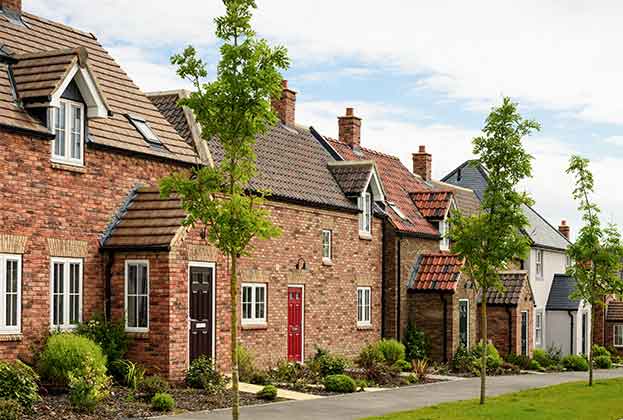Our forecast for growth in the average price of a UK home recognises there will be variation in different parts of the market and is based on a series of economic and political assumptions
Despite surprisingly strong wage growth and levels of employment, not to mention an average mortgage interest rate of just 2.06%, uncertainty regarding the outcome of Brexit weighs down on buyer sentiment. That leaves annual house price growth across the UK at just 0.4% by the end of October. Modest price falls in the London mainstream market have filtered into its commuter zone, while markets further afield have slowed in the second half of the year. Given the deadlock in parliament, a general election in December reduces the prospect of any improvement in sentiment from agreeing a revised Brexit deal with the EU.
While the threat of a recession recedes, both GDP and wage growth remain suppressed, providing little impetus for a sustained Brexit bounce at this stage (though we do expect a burst of stronger market activity in the immediate aftermath of a Brexit deal). Ongoing uncertainty over the future of our trading relationship with the EU during the transition period and the impact of a slowing global economy means potential home movers remain relatively cautious about their household finances, particularly in the second half of the year. Lead indicators suggest demand will continue to be subdued in London as the focus shifts back towards gradually increasing interest rates over the medium term.
As the UK’s future trading relationship with the EU and other major trading partners becomes clearer, confidence returns to the economy. This translates into improved wage growth, which acts as a stimulus for housing demand, while interest rates remain relatively low. London returns to modest growth, though this is constrained by how much buyers can borrow due to mortgage regulation. We expect the strongest price growth in the North West of England, reflecting the strength and diversity of the regional economy and the capacity for higher loan to income ratios.
Gradual increases in interest rates begin to constrain affordability more widely at the point of getting a mortgage. At a national level, that means house price growth relies on growth in household incomes among mortgaged owner-occupiers. Buy-to-let investors receive their first tax bill with the full restrictions on tax relief for mortgage interest. That will continue to curb demand from that buyer group, especially in higher-value, lower-yielding markets.
Annual house price growth continues at a relatively modest level, slightly above the rate of inflation. Help to Buy is scheduled to end in the early part of the year, which curtails demand from first-time buyers for new build housing and increases the focus on alternatives, such as shared ownership. Meanwhile, growth in values starts to unlock some of the mortgage prisoners who gradually build up enough equity to be able to trade up the housing ladder.
By the end of our forecast period, we expect mainstream house prices to have risen by 15% on average – varying from just +4.0% in London to +24.0% in the North West of England. On the basis of the economic assumptions stated, that brings mortgage affordability back in line with the average of the past 35 years and allows London prices to re-balance compared with the rest of the UK. Our forecasts remain sensitive to the economic assumptions used, particularly the cost of mortgage debt. If bank base rates continue to increase gradually towards 2.75% by 2027, as forecast, a period of low growth is likely to continue beyond this five-year period.
Note: All forecasts apply to average prices in the second-hand market. New build values may not move at the same rate. Economic assumptions based on Oxford Economics forecasts as at October 2019 Source: Savills Research
Read the articles within Residential property forecasts below.
.jpg)
.jpg)
.jpg)
